#AWS CloudWatch Monitoring and Logging Best Practices
Explore tagged Tumblr posts
Text
ColdFusion and AWS CloudWatch: Monitoring and Logging Best Practices
#ColdFusion and AWS CloudWatch: Monitoring and Logging Best Practices#ColdFusion and AWS CloudWatch Monitoring#ColdFusion and AWS CloudWatch Logging Best Practices#ColdFusion and AWS CloudWatch#ColdFusion AWS CloudWatch#ColdFusion#AWS CloudWatch#ColdFusion Monitoring and Logging Best Practices#AWS CloudWatch Monitoring and Logging Best Practices
0 notes
Text
Navigating AWS: A Comprehensive Guide for Beginners
In the ever-evolving landscape of cloud computing, Amazon Web Services (AWS) has emerged as a powerhouse, providing a wide array of services to businesses and individuals globally. Whether you're a seasoned IT professional or just starting your journey into the cloud, understanding the key aspects of AWS is crucial. With AWS Training in Hyderabad, professionals can gain the skills and knowledge needed to harness the capabilities of AWS for diverse applications and industries. This blog will serve as your comprehensive guide, covering the essential concepts and knowledge needed to navigate AWS effectively.

1. The Foundation: Cloud Computing Basics
Before delving into AWS specifics, it's essential to grasp the fundamentals of cloud computing. Cloud computing is a paradigm that offers on-demand access to a variety of computing resources, including servers, storage, databases, networking, analytics, and more. AWS, as a leading cloud service provider, allows users to leverage these resources seamlessly.
2. Setting Up Your AWS Account
The first step on your AWS journey is to create an AWS account. Navigate to the AWS website, provide the necessary information, and set up your payment method. This account will serve as your gateway to the vast array of AWS services.
3. Navigating the AWS Management Console
Once your account is set up, familiarize yourself with the AWS Management Console. This web-based interface is where you'll configure, manage, and monitor your AWS resources. It's the control center for your cloud environment.
4. AWS Global Infrastructure: Regions and Availability Zones
AWS operates globally, and its infrastructure is distributed across regions and availability zones. Understand the concept of regions (geographic locations) and availability zones (isolated data centers within a region). This distribution ensures redundancy and high availability.
5. Identity and Access Management (IAM)
Security is paramount in the cloud. AWS Identity and Access Management (IAM) enable you to manage user access securely. Learn how to control who can access your AWS resources and what actions they can perform.
6. Key AWS Services Overview
Explore fundamental AWS services:
Amazon EC2 (Elastic Compute Cloud): Virtual servers in the cloud.
Amazon S3 (Simple Storage Service): Scalable object storage.
Amazon RDS (Relational Database Service): Managed relational databases.
7. Compute Services in AWS
Understand the various compute services:
EC2 Instances: Virtual servers for computing capacity.
AWS Lambda: Serverless computing for executing code without managing servers.
Elastic Beanstalk: Platform as a Service (PaaS) for deploying and managing applications.
8. Storage Options in AWS
Explore storage services:
Amazon S3: Object storage for scalable and durable data.
EBS (Elastic Block Store): Block storage for EC2 instances.
Amazon Glacier: Low-cost storage for data archiving.
To master the intricacies of AWS and unlock its full potential, individuals can benefit from enrolling in the Top AWS Training Institute.
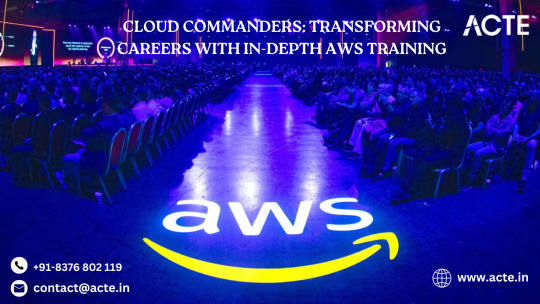
9. Database Services in AWS
Learn about managed database services:
Amazon RDS: Managed relational databases.
DynamoDB: NoSQL database for fast and predictable performance.
Amazon Redshift: Data warehousing for analytics.
10. Networking Concepts in AWS
Grasp networking concepts:
Virtual Private Cloud (VPC): Isolated cloud networks.
Route 53: Domain registration and DNS web service.
CloudFront: Content delivery network for faster and secure content delivery.
11. Security Best Practices in AWS
Implement security best practices:
Encryption: Ensure data security in transit and at rest.
IAM Policies: Control access to AWS resources.
Security Groups and Network ACLs: Manage traffic to and from instances.
12. Monitoring and Logging with AWS CloudWatch and CloudTrail
Set up monitoring and logging:
CloudWatch: Monitor AWS resources and applications.
CloudTrail: Log AWS API calls for audit and compliance.
13. Cost Management and Optimization
Understand AWS pricing models and manage costs effectively:
AWS Cost Explorer: Analyze and control spending.
14. Documentation and Continuous Learning
Refer to the extensive AWS documentation, tutorials, and online courses. Stay updated on new features and best practices through forums and communities.
15. Hands-On Practice
The best way to solidify your understanding is through hands-on practice. Create test environments, deploy sample applications, and experiment with different AWS services.
In conclusion, AWS is a dynamic and powerful ecosystem that continues to shape the future of cloud computing. By mastering the foundational concepts and key services outlined in this guide, you'll be well-equipped to navigate AWS confidently and leverage its capabilities for your projects and initiatives. As you embark on your AWS journey, remember that continuous learning and practical application are key to becoming proficient in this ever-evolving cloud environment.
2 notes
·
View notes
Text
How to Deploy Your Full Stack Application: A Beginner’s Guide

Deploying a full stack application involves setting up your frontend, backend, and database on a live server so users can access it over the internet. This guide covers deployment strategies, hosting services, and best practices.
1. Choosing a Deployment Platform
Popular options include:
Cloud Platforms: AWS, Google Cloud, Azure
PaaS Providers: Heroku, Vercel, Netlify
Containerized Deployment: Docker, Kubernetes
Traditional Hosting: VPS (DigitalOcean, Linode)
2. Deploying the Backend
Option 1: Deploy with a Cloud Server (e.g., AWS EC2, DigitalOcean)
Set Up a Virtual Machine (VM)
bash
ssh user@your-server-ip
Install Dependencies
Node.js (sudo apt install nodejs npm)
Python (sudo apt install python3-pip)
Database (MySQL, PostgreSQL, MongoDB)
Run the Server
bash
nohup node server.js & # For Node.js apps gunicorn app:app --daemon # For Python Flask/Django apps
Option 2: Serverless Deployment (AWS Lambda, Firebase Functions)
Pros: No server maintenance, auto-scaling
Cons: Limited control over infrastructure
3. Deploying the Frontend
Option 1: Static Site Hosting (Vercel, Netlify, GitHub Pages)
Push Code to GitHub
Connect GitHub Repo to Netlify/Vercel
Set Build Command (e.g., npm run build)
Deploy and Get Live URL
Option 2: Deploy with Nginx on a Cloud Server
Install Nginx
bash
sudo apt install nginx
Configure Nginx for React/Vue/Angular
nginx
server { listen 80; root /var/www/html; index index.html; location / { try_files $uri /index.html; } }
Restart Nginx
bash
sudo systemctl restart nginx
4. Connecting Frontend and Backend
Use CORS middleware to allow cross-origin requests
Set up reverse proxy with Nginx
Secure API with authentication tokens (JWT, OAuth)
5. Database Setup
Cloud Databases: AWS RDS, Firebase, MongoDB Atlas
Self-Hosted Databases: PostgreSQL, MySQL on a VPS
bash# Example: Run PostgreSQL on DigitalOcean sudo apt install postgresql sudo systemctl start postgresql
6. Security & Optimization
✅ SSL Certificate: Secure site with HTTPS (Let’s Encrypt) ✅ Load Balancing: Use AWS ALB, Nginx reverse proxy ✅ Scaling: Auto-scale with Kubernetes or cloud functions ✅ Logging & Monitoring: Use Datadog, New Relic, AWS CloudWatch
7. CI/CD for Automated Deployment
GitHub Actions: Automate builds and deployment
Jenkins/GitLab CI/CD: Custom pipelines for complex deployments
Docker & Kubernetes: Containerized deployment for scalability
Final Thoughts
Deploying a full stack app requires setting up hosting, configuring the backend, deploying the frontend, and securing the application.
Cloud platforms like AWS, Heroku, and Vercel simplify the process, while advanced setups use Kubernetes and Docker for scalability.
WEBSITE: https://www.ficusoft.in/full-stack-developer-course-in-chennai/
0 notes
Text
A Deep Dive into Amazon CloudWatch: Your Ultimate Monitoring Solution
In today's cloud-centric world, effective monitoring is crucial for maintaining the performance and reliability of applications and services. Amazon CloudWatch, a core component of the Amazon Web Services (AWS) ecosystem, offers a robust solution for monitoring AWS resources and applications. In this blog, we’ll explore the features, benefits, and best practices for using Amazon CloudWatch to ensure your cloud infrastructure operates smoothly.
If you want to advance your career at the AWS Course in Pune, you need to take a systematic approach and join up for a course that best suits your interests and will greatly expand your learning path.
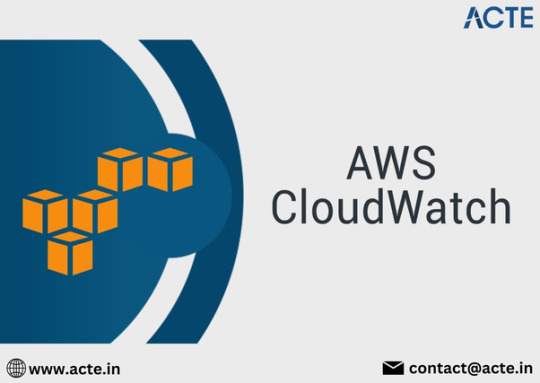
What is Amazon CloudWatch?
Amazon CloudWatch is a comprehensive monitoring and observability service designed to provide real-time insights into your AWS environment. It collects data from various AWS resources, enabling users to track performance, set alarms, and gain visibility into overall system health. With CloudWatch, organizations can proactively manage their cloud resources, ensuring optimal performance and minimal downtime.
Key Features of Amazon CloudWatch
1. Comprehensive Metrics Collection
CloudWatch automatically gathers metrics from numerous AWS services. This includes essential data points such as CPU utilization, memory usage, and network traffic for services like EC2, RDS, and Lambda. By aggregating this data, users can monitor the health and efficiency of their resources at a glance.
2. Log Management and Analysis
CloudWatch Logs allows you to collect, monitor, and analyze log files from your applications and AWS resources. Users can search through logs in real-time, set retention policies, and create metrics based on log data, enabling effective troubleshooting and performance optimization.
3. Alarms and Notifications
Setting up CloudWatch Alarms helps you stay informed about the health of your services. You can define thresholds for specific metrics, and when those thresholds are breached, CloudWatch can trigger notifications via Amazon SNS (Simple Notification Service), ensuring you can act swiftly to address potential issues.
4. Custom Dashboards
CloudWatch Dashboards enable users to create personalized views of their metrics. These visual representations allow for easy monitoring of multiple resources, helping teams identify trends, bottlenecks, and anomalies quickly.
5. Event-Driven Monitoring
With CloudWatch Events, you can respond to changes in your AWS environment automatically. By defining rules, you can trigger actions based on specific events, such as scaling resources in response to increased load, further enhancing the automation of your infrastructure management.
6. Integration with AWS Services
CloudWatch integrates seamlessly with a wide range of AWS services, including AWS Lambda, Auto Scaling, and Amazon ECS (Elastic Container Service). This integration allows for more cohesive operations and enables automated responses to monitoring data.
To master the intricacies of AWS and unlock its full potential, individuals can benefit from enrolling in the AWS Online Training.

Benefits of Using Amazon CloudWatch
- Enhanced Operational Visibility
CloudWatch provides deep insights into your AWS resources, making it easier to monitor performance and troubleshoot issues before they escalate.
- Cost Management
By leveraging CloudWatch's monitoring capabilities, organizations can optimize resource usage, avoiding unnecessary costs associated with over-provisioning or underutilized resources.
- Increased Application Reliability
Proactive monitoring and alerting help maintain high application performance and reliability, leading to improved user experiences and satisfaction.
- Streamlined Automation
Automating responses to specific metrics and log events can save time and reduce the need for manual interventions, allowing teams to focus on more strategic initiatives.
Conclusion
Amazon CloudWatch is an indispensable tool for anyone utilizing AWS. Its comprehensive monitoring capabilities empower organizations to maintain high levels of performance and reliability in their cloud environments. By leveraging the features and best practices outlined in this blog, you can optimize your use of CloudWatch and ensure your applications run smoothly, ultimately enhancing business success in the cloud.
0 notes
Text
Step-by-Step Guide to AIOps Platform Development for Enterprises
As IT infrastructures become more complex, enterprises are increasingly turning to AIOps (Artificial Intelligence for IT Operations) platforms to streamline operations, enhance efficiency, and proactively manage incidents. A well-developed AIOps platform can automate troubleshooting, reduce downtime, and optimize IT performance using AI and machine learning.

In this blog, we’ll take you through a step-by-step guide to AIOps platform development for enterprises, covering everything from planning and data integration to model deployment and continuous optimization.
Step 1: Define Business Goals and Requirements
Before starting AIOps platform development, enterprises must clearly define objectives and align them with business needs. Key considerations include:
What IT challenges need to be solved? (e.g., downtime reduction, anomaly detection, performance optimization)
What metrics will define success? (e.g., Mean Time to Resolution (MTTR), system uptime, cost savings)
What existing IT tools and processes need integration?
A collaborative approach involving IT teams, data scientists, and business stakeholders ensures alignment between AIOps capabilities and enterprise goals.
Step 2: Choose the Right AIOps Architecture
The AIOps platform should be designed with scalability, flexibility, and real-time processing in mind. A typical AIOps architecture consists of:
1. Data Collection Layer
Collects data from logs, metrics, traces, and event streams
Integrates with IT monitoring tools (e.g., Splunk, Datadog, Prometheus)
2. Data Processing & Normalization
Cleans and structures raw data to prepare it for analysis
Eliminates redundant, outdated, and irrelevant data
3. AI & Machine Learning Models
Uses anomaly detection, predictive analytics, and event correlation algorithms
Applies natural language processing (NLP) for automated log analysis
4. Automation & Remediation Layer
Implements self-healing capabilities through automation scripts
Provides recommendations or auto-remediation for IT incidents
5. Visualization & Reporting
Dashboards and reports for monitoring insights
Custom alerts for proactive issue resolution
By selecting the right cloud-based, on-premises, or hybrid architecture, enterprises ensure scalability and flexibility.
Step 3: Data Integration & Collection
AIOps thrives on real-time, high-quality data from multiple sources. The platform should ingest data from:
IT infrastructure monitoring tools (Nagios, Zabbix)
Application performance monitoring (APM) tools (New Relic, AppDynamics)
Network monitoring tools (SolarWinds, Cisco DNA)
Cloud services (AWS CloudWatch, Azure Monitor)
💡 Best Practice: Use streaming data pipelines (Kafka, Apache Flink) for real-time event processing.
Step 4: Implement AI/ML Models for Analysis
The core of an AIOps platform is its AI-driven analysis. Enterprises should develop and deploy models for:
1. Anomaly Detection
Identifies abnormal patterns in system behavior using unsupervised learning
Helps detect issues before they escalate
2. Event Correlation & Noise Reduction
Uses graph-based analysis to correlate alerts from different sources
Filters out noise and reduces alert fatigue
3. Predictive Analytics
Forecasts potential failures using time-series forecasting models
Helps IT teams take preventive action
4. Incident Root Cause Analysis (RCA)
Uses AI-based pattern recognition to identify root causes
Reduces mean time to detect (MTTD) and mean time to resolve (MTTR)
💡 Best Practice: Continuously train and refine models using historical and real-time data for higher accuracy.
Step 5: Implement Automation & Self-Healing Capabilities
The true power of AIOps comes from its ability to automate responses and remediation. Enterprises should:
Automate routine IT tasks like server restarts, patch updates, and log cleanup
Use AI-driven playbooks for common incident resolution
Implement closed-loop automation where AI detects issues and applies fixes automatically
💡 Example: If an AIOps system detects high memory usage on a server, it can automatically restart specific processes without human intervention.
Step 6: Develop Dashboards & Alerts for Monitoring
To provide IT teams with real-time insights, enterprises must develop intuitive dashboards and alerting systems:
Use Grafana, Kibana, or Power BI for visualization
Set up dynamic alert thresholds using AI to prevent false positives
Enable multi-channel notifications (Slack, Teams, email, SMS)
💡 Best Practice: Implement explainable AI (XAI) to provide transparent insights into why alerts are triggered.
Step 7: Test, Deploy, and Optimize
After development, the AIOps platform should be rigorously tested for:
Scalability: Can it handle large data volumes?
Accuracy: Are AI models correctly identifying anomalies?
Latency: Is the system responding in real-time?
After successful testing, deploy the platform in stages (pilot → phased rollout → full deployment) to minimize risks.
💡 Best Practice: Implement a feedback loop where IT teams validate AI recommendations and continuously improve models.
Step 8: Continuous Learning and Improvement
AIOps is not a one-time setup—it requires continuous monitoring and optimization:
Retrain AI models regularly with new datasets
Refine automation workflows based on performance feedback
Incorporate user feedback to improve accuracy and usability
💡 Best Practice: Schedule quarterly AIOps audits to ensure efficiency and alignment with business goals.
Conclusion
Developing an AIOps platform for enterprises requires a structured, step-by-step approach—from goal setting and data integration to AI model deployment and automation. When implemented correctly, AIOps can enhance IT efficiency, reduce downtime, and enable proactive incident management.
0 notes
Text
🌟 Mastering AWS S3: A Comprehensive Guide 🌟
🚀 Introduction
In today’s digital age, cloud storage is the backbone of modern businesses and developers. 🌐 And when it comes to AWS S3 (Amazon Simple Storage Service), you’re looking at one of the most reliable and scalable solutions out there. 💪 Whether it’s hosting websites, backing up data, or handling big data analytics, AWS S3 has your back. 🙌
This guide breaks down everything you need to know about AWS S3: its features, benefits, use cases, and tips to unlock its full potential. 💎
📂 What is AWS S3?
AWS S3 is your go-to cloud-based storage solution. ☁️ It’s like having a digital vault that scales endlessly to store and retrieve your data. First launched in 2006, it’s now a must-have for businesses worldwide 🌍.
AWS S3 organizes data into “buckets” 🪣, where each bucket acts as a container for objects (aka files 🗂️). Add in metadata and unique keys, and voilà—you’ve got a seamless storage solution!
🔑 Key Concepts:
Buckets: Think of them as folders for your data 📂.
Objects: The actual files stored within S3 📁.
Keys: Unique IDs to find your files easily 🔍.
Regions: Choose physical data storage locations for faster access and compliance. 🌎
✨ Key Features of AWS S3
Here’s why AWS S3 is a crowd favorite 🌟:
1. 🚀 Scalability
It grows with you! Store as much data as you need without limits. 📈
2. 🛡️ Durability and Availability
Your data is ultra-safe with 99.999999999% durability—talk about reliability! 💾✨
3. 🔒 Security
Enjoy top-notch encryption (both at rest and in transit) and granular access controls. 🔐
4. 🔄 Versioning
Never lose an important file again! Keep multiple versions of your objects. 🕰️
5. 🏷️ Storage Classes
Optimize costs with different storage classes like Standard, Glacier, and Intelligent-Tiering. 💰💡
6. 🌍 Data Transfer Acceleration
Speed up your transfers using Amazon’s global network. 🚄
7. 🔧 Lifecycle Management
Automate data transitions and deletions based on policies. 📜🤖
💡 Benefits of Using AWS S3
1. 💵 Cost-Effectiveness
With pay-as-you-go pricing, you only pay for what you actually use! 🛒
2. 🌏 Global Reach
Store your data in multiple AWS regions for lightning-fast access. ⚡
3. 🔗 Seamless Integration
Works flawlessly with AWS services like Lambda, EC2, and RDS. 🔄
4. 🛠️ Versatility
From hosting static websites to enabling machine learning, S3 does it all! 🤹♂️
5. 👩💻 Developer-Friendly
Packed with SDKs, APIs, and CLI tools to make life easier. 🎯
📚 Common Use Cases
Here’s how businesses use AWS S3 to shine ✨:
1. 🔄 Backup and Recovery
Protect critical data with reliable backups. 🔄💾
2. 🌐 Content Delivery
Host websites, images, and videos, and pair it with CloudFront for blazing-fast delivery. 🌟📽️
3. 📊 Big Data Analytics
Store and process huge datasets with analytics tools like EMR and Athena. 📈🔍
4. 🎥 Media Hosting
Perfect for storing high-res images and streaming videos. 📸🎬
5. ⚙️ Application Hosting
Store app data like configs and logs effortlessly. 📱🗂️
🔒 Security and Compliance
AWS S3 keeps your data safe and sound 🔐:
Encryption: Server-side and client-side options for ironclad security. 🔐✨
Access Control: Fine-tune who can access what using IAM and ACLs. 🗝️
Compliance: Certified for standards like GDPR, HIPAA, and PCI DSS. 🏆
Monitoring: Stay alert with AWS CloudTrail and Amazon Macie. 👀🔔
📈 Best Practices for Using AWS S3
Enable Versioning: Keep multiple versions to avoid accidental data loss. 🔄
Use Lifecycle Policies: Automate data transitions to save costs. 💡
Secure Your Data: Lock it down with encryption and IAM policies. 🔒✨
Monitor Usage: Stay on top of things with AWS CloudWatch. 📊👀
Optimize Storage Classes: Match the class to your data needs for cost-efficiency. 🏷️
💰 AWS S3 Pricing Overview
AWS S3 pricing is straightforward: pay for what you use! 💵 Pricing depends on:
Storage consumed 📦
Data retrieval 📤
Data transfer 🌐
Operations and requests 🔄
Choose the right storage class and region to keep costs low. 🧮💡
🔗 Integration with Other AWS Services
S3 works hand-in-hand with AWS tools to supercharge your workflows:
AWS Lambda: Trigger functions on S3 events. ⚙️
Amazon CloudFront: Deliver content globally at top speeds. 🌍💨
Amazon RDS: Store database backups with ease. 📂
Amazon SageMaker: Use S3 for training machine learning models. 🤖📊
🌟 Conclusion
AWS S3 is the ultimate cloud storage solution—reliable, scalable, and packed with features. 💪 Whether you’re a small startup or a global enterprise, S3 can handle it all. 💼✨
For even more insights, check out Hexahome Blogs, where we uncover the latest trends in tech, cloud computing, and beyond! 📖💡
📝 Learn More with Hexahome Blogs
Hexadecimal Software is your go-to partner for software development and IT services. 🌟 From cloud solutions to cutting-edge apps, we make your digital dreams a reality. 🌈💻
And don’t forget to explore Hexahome—your one-stop shop for everything tech, lifestyle, and more! 🚀📱
Get started with AWS S3 today and watch your business soar! 🌍✨
0 notes
Text
"Mastering AWS CloudWatch: A Comprehensive Guide to Monitoring and Logging"
Introduction AWS CloudWatch is a powerful monitoring and logging service provided by Amazon Web Services (AWS). It allows you to collect and track metrics, logs, and performance data for your applications and services running on AWS. In this comprehensive guide, we will cover the core concepts, implementation, and best practices for mastering AWS CloudWatch. What you will learn: Core concepts…
0 notes
Text
"What Is the Role of an AWS Solution Architect in DevOps and Automation?"

The rapid adoption of cloud technologies has created a strong demand for professionals who can design and implement scalable, secure, and cost-effective cloud solutions. Among these professionals, the AWS Solution Architect stands out as a critical role in helping organizations harness the power of Amazon Web Services (AWS). But what exactly does an AWS Solution Architect do? Let’s break down this pivotal role.
1. Understanding Client Requirements
An AWS Solution Architect acts as a bridge between the technical and business sides of an organization. Their first responsibility is to thoroughly understand a client’s business objectives, challenges, and technical requirements. By assessing current infrastructure and identifying pain points, they lay the groundwork for an effective cloud solution.
Key responsibilities include:
Conducting stakeholder interviews.
Gathering and analyzing technical requirements.
Defining success metrics for cloud migration or deployment projects.
2. Designing Scalable and Secure Architectures
At the heart of their role, AWS Solution Architects design cloud architectures that are scalable, secure, and tailored to the client’s needs. Leveraging AWS’s wide range of services—such as EC2, S3, RDS, Lambda, and VPC—they create solutions that optimize performance and cost while ensuring high availability.
Key considerations during design include:
Security: Ensuring data encryption, access control, and compliance with industry standards.
Scalability: Designing systems that can handle traffic spikes and scale seamlessly.
Cost Optimization: Choosing the right AWS services to minimize costs while meeting requirements.
3. Overseeing Cloud Migration
When organizations move from on-premises infrastructure to AWS, Solution Architects play a crucial role in planning and executing the migration process. They develop step-by-step strategies, often employing AWS services like the AWS Migration Hub, Database Migration Service (DMS), and Snowball for seamless transitions.
Key tasks include:
Assessing current infrastructure for cloud readiness.
Identifying dependencies and prioritizing workloads for migration.
Ensuring minimal downtime during the transition.
4. Collaborating with Cross-Functional Teams
AWS Solution Architects don’t work in isolation. They collaborate with developers, DevOps engineers, system administrators, and business teams to implement their designs effectively. They often serve as technical advisors during the implementation phase, ensuring the architecture is executed as planned.
Collaboration may involve:
Guiding development teams on best practices for coding within the AWS environment.
Working with DevOps teams to set up CI/CD pipelines using AWS tools like CodePipeline and CodeBuild.
Assisting operations teams with monitoring and logging via services like CloudWatch and AWS X-Ray.
5. Ensuring Performance Optimization
Even after deployment, the role of an AWS Solution Architect doesn’t end. They continuously monitor and optimize systems to ensure they perform at their best. This includes:
Reviewing usage patterns and scaling resources accordingly.
Analyzing system performance using tools like AWS CloudWatch.
Suggesting optimizations to reduce costs, such as leveraging Spot Instances or improving database configurations.
6. Staying Updated with AWS Advancements
The AWS ecosystem evolves rapidly, with new services, features, and updates being released regularly. AWS Solution Architects must stay ahead of these changes to provide cutting-edge solutions to clients. This involves:
Earning AWS certifications (e.g., AWS Certified Solutions Architect – Associate or Professional).
Attending AWS events, such as re:Invent and AWS Summits.
Exploring new AWS services to identify opportunities for innovation.
7. Educating Clients and Teams
An often-overlooked aspect of the AWS Solution Architect’s role is education. They help clients and internal teams understand the architecture, tools, and best practices to maximize the value of their AWS investment. This includes:
Conducting workshops and training sessions.
Documenting solutions and creating technical guides.
Supporting teams in troubleshooting and issue resolution.
Why is the Role of an AWS Solution Architect Important?
The AWS Solution Architect’s role is crucial because they ensure that organizations can leverage AWS’s full potential to meet business goals. By combining technical expertise with business acumen, they:
Accelerate cloud adoption and innovation.
Reduce costs and improve efficiency.
Ensure robust security and compliance.
Foster collaboration between technical and non-technical teams.
Is Becoming an AWS Solution Architect Right for You?
If you’re passionate about technology, enjoy solving complex problems, and have strong communication skills, becoming an AWS Solution Architect could be an excellent career path. The role offers exciting challenges, high demand, and competitive compensation. To get started, consider earning the AWS Certified Solutions Architect – Associate certification as a foundation for building your expertise.
In conclusion, AWS Solution Architects play a vital role in shaping the cloud strategies of organizations worldwide. By bridging the gap between business needs and technical solutions, they help businesses thrive in the era of digital transformation. Whether you're a business leader or an aspiring professional, understanding this role can provide valuable insights into the future of cloud computing.
Let me know if you’d like the next blog or any adjustments!
#awstraining#cloudservices#softwaredeveloper#training#iot#data#azurecloud#artificialintelligence#softwareengineer#cloudsecurity#cloudtechnology#business#jenkins#softwaretesting#onlinetraining#ansible#microsoftazure#digitaltransformation#ai#reactjs#awscertification#google#cloudstorage#git#devopstools#coder#innovation#cloudsolutions#informationtechnology#startup
0 notes
Text
Unlocking the Power of OpenShift on AWS: The Perfect Cloud-Native Duo
The demand for cloud-native solutions is at an all-time high, and businesses are rapidly adopting platforms that seamlessly integrate scalability, reliability, and flexibility. Among the numerous options, OpenShift on AWS stands out as a leading combination. Here's why this partnership is reshaping the future of modern application development and deployment.
1. Why Choose OpenShift on AWS?
OpenShift, Red Hat's enterprise Kubernetes platform, provides a developer-friendly and operations-ready environment for containerized applications. AWS, the world’s most popular cloud platform, delivers unmatched scalability and a broad array of cloud services. Together, they enable organizations to:
Accelerate Development: OpenShift's developer tools and AWS's services reduce time-to-market.
Ensure Scalability: Scale applications automatically using AWS Auto Scaling and OpenShift's Horizontal Pod Autoscaler.
Optimize Costs: Pay only for what you use with AWS while utilizing OpenShift’s resource management capabilities.
2. Real-World Use Cases
a. Seamless Hybrid Cloud Deployments
Organizations leveraging hybrid cloud strategies find OpenShift on AWS a perfect match. Workloads can move effortlessly between on-premise OpenShift clusters and AWS-based clusters. Example: A retail company manages seasonal spikes by deploying additional resources on AWS while maintaining core workloads on-premise.
b. AI and Machine Learning Workflows
OpenShift on AWS enables simplified deployment of ML models using AWS services like SageMaker, combined with OpenShift’s container orchestration. Example: A fintech firm deploys fraud detection models in containers on AWS to scale inference on demand.
c. CI/CD Pipelines with OpenShift Pipelines
Using OpenShift Pipelines and AWS CodeBuild, organizations create robust CI/CD workflows that integrate with services like S3 for artifact storage. Example: A software company automates builds and deployments across multiple AWS regions, ensuring high availability.
3. Key Features That Make OpenShift on AWS a Game-Changer
Red Hat OpenShift Service on AWS (ROSA): A fully managed service that reduces the operational overhead of maintaining clusters.
AWS Integration: Direct access to AWS services like RDS, DynamoDB, and S3 within OpenShift applications.
Enhanced Security: Take advantage of OpenShift's compliance with standards like PCI DSS and AWS’s shared responsibility model for security.
4. Challenges and Best Practices
Challenges:
Learning curve for developers and operations teams unfamiliar with Kubernetes.
Managing costs if resources are not optimized effectively.
Best Practices:
Right-Sizing Resources: Use tools like OpenShift Cost Management and AWS Cost Explorer.
Monitoring and Logging: Leverage AWS CloudWatch and OpenShift’s built-in monitoring for comprehensive insights.
Training Teams: Invest in OpenShift and AWS certification for your team to ensure smooth adoption.
5. What’s Next for OpenShift on AWS?
The future looks bright with Red Hat and AWS continuously innovating. With support for emerging technologies like serverless Kubernetes and tighter integration with AI-driven AWS services, this partnership will only grow stronger.
Conclusion
OpenShift on AWS empowers businesses to build, deploy, and scale cloud-native applications with confidence. Whether you're modernizing existing apps or building new ones, this combination provides the tools and flexibility needed to thrive in today’s fast-paced digital landscape.
Are you ready to transform your application development journey? Explore OpenShift on AWS and unlock a world of possibilities!
For more information, Visit : https://www.hawkstack.com/
0 notes
Text
DevOps and Deployment
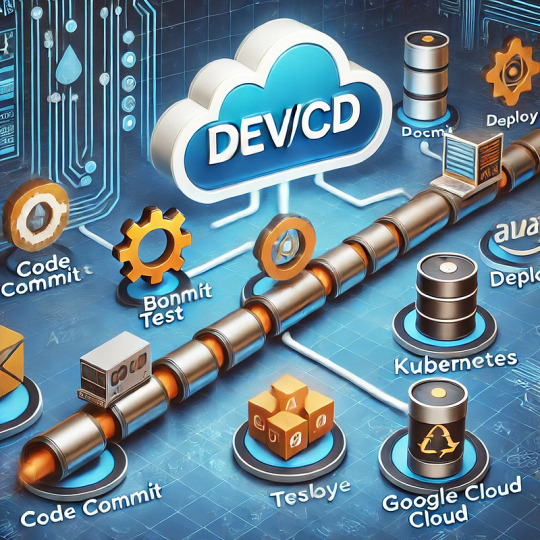
DevOps and Deployment: Streamlining Software Delivery
Introduction
Brief overview of DevOps and its role in modern software development.
Importance of automation and continuous delivery in deployment.
Key benefits: faster releases, improved collaboration, and increased reliability.
1. What is DevOps?
Definition and purpose.
Core principles: Collaboration, Automation, Continuous Integration (CI), Continuous Deployment (CD), and Monitoring.
2. The DevOps Deployment Lifecycle
Plan: Agile methodologies and backlog prioritization.
Develop: Version control (Git, GitHub, GitLab, Bitbucket).
Build & Test: CI/CD pipelines, automated testing.
Release & Deploy: Automated deployments with containerization (Docker, Kubernetes).
Operate & Monitor: Logging, monitoring, and feedback loops.
3. CI/CD: The Backbone of DevOps Deployment
Continuous Integration (CI)
Automating code integration and testing.
Tools: Jenkins, GitHub Actions, GitLab CI/CD, CircleCI.
Continuous Deployment (CD)
Automating deployments to production.
Canary releases, blue-green deployments, feature flags.
Example CI/CD Pipeline (GitHub Actions & Docker)
yamlname: CI/CD Pipelineon: push: branches: - mainjobs: build: runs-on: ubuntu-latest steps: - name: Checkout Code uses: actions/checkout@v2 - name: Build Docker Image run: docker build -t myapp . - name: Push to Docker Hub run: docker push myapp
4. Containerization & Orchestration
Docker: Packaging applications in lightweight containers.
Kubernetes: Managing containerized applications at scale.
Terraform & Infrastructure as Code (IaC): Automating infrastructure provisioning.
5. Cloud Deployments in DevOps
AWS (EKS, ECS, Lambda)
Azure DevOps & Azure Kubernetes Service (AKS)
Google Cloud (GKE, Cloud Run)
6. Security & Monitoring in DevOps Deployment
Implementing security best practices: Secrets management, role-based access.
Monitoring Tools: Prometheus, Grafana, ELK Stack, Datadog.
Logging & Alerting: Centralized logging with Splunk, AWS CloudWatch, etc.
7. Best Practices for DevOps Deployment
Automate everything.
Implement security from the start (DevSecOps).
Use microservices architecture.
Optimize pipelines for faster feedback.
Conclusion
How DevOps transforms deployment workflows.
Future trends: AI-driven DevOps, GitOps, and serverless deployments.
Encouraging DevOps adoption for efficient software delivery.
WEBSITE: https://www.ficusoft.in/full-stack-developer-course-in-chennai/
0 notes
Text
Exploring Amazon ECS: A Comprehensive Guide to AWS's Container Management Service
Amazon Elastic Container Service (ECS) is a powerful and flexible container orchestration service offered by Amazon Web Services (AWS). Designed for developers and organizations looking to deploy and manage containerized applications, ECS simplifies the orchestration process. In this blog, we'll explore the features, benefits, and best practices of using Amazon ECS.
If you want to advance your career at the AWS Course in Pune, you need to take a systematic approach and join up for a course that best suits your interests and will greatly expand your learning path.
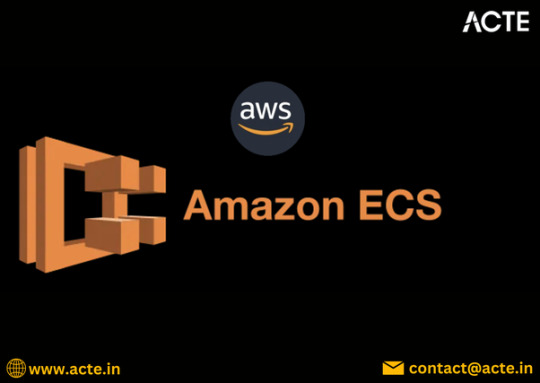
What is Amazon ECS?
Amazon ECS allows you to run Docker containers on a managed cluster of Amazon EC2 instances. It abstracts the complexity of infrastructure management, enabling you to focus on building and deploying applications. With ECS, you can easily manage the lifecycle of your containers, scale applications based on demand, and integrate with other AWS services.
Key Features of Amazon ECS
1. Task Definitions
Task definitions are a crucial component of ECS. They define the parameters for your containers, including the Docker image to use, CPU and memory requirements, networking settings, and environment variables. This makes it easy to deploy consistent and repeatable container instances.
2. Service Management
ECS allows you to define services that maintain a specified number of task instances running at all times. If a task fails, ECS automatically replaces it, ensuring high availability for your applications.
3. Integration with AWS Services
ECS seamlessly integrates with other AWS services, such as Amazon RDS, Amazon S3, and AWS Lambda. This integration helps you build complex applications that leverage the full power of the AWS ecosystem.
4. Scalability and Load Balancing
ECS supports auto-scaling, allowing you to adjust the number of running tasks based on application demand. You can set up policies that scale your services in or out automatically, ensuring optimal performance while minimizing costs.
5. Security Features
ECS provides robust security controls, including IAM roles for fine-grained access management, VPC support for network isolation, and encryption options for sensitive data. This helps you maintain compliance and protect your applications.
6. Support for Fargate
AWS Fargate is a serverless compute engine for running containers. With Fargate, you can run ECS tasks without managing the underlying EC2 instances, simplifying deployment and scaling further.
To master the intricacies of AWS and unlock its full potential, individuals can benefit from enrolling in the AWS Online Training.
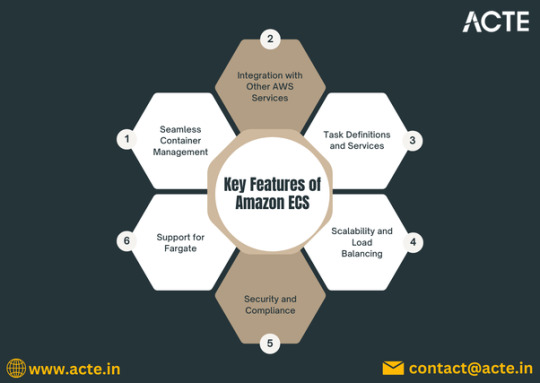
Benefits of Using Amazon ECS
Cost Efficiency: With ECS, you only pay for the resources you use, reducing infrastructure costs. Fargate eliminates the need for provisioning EC2 instances, allowing for more flexible billing.
High Availability: ECS is built for resilience. Its automatic health checks and self-healing capabilities ensure your applications remain available even in the face of failures.
Flexibility in Deployment: You can choose to run your containers on EC2 instances or use Fargate, giving you the flexibility to select the best deployment model for your needs.
Best Practices for Using Amazon ECS
Use Task Definitions Wisely: Create reusable task definitions to minimize duplication and ensure consistency across environments.
Implement Auto-Scaling: Set up auto-scaling policies based on metrics such as CPU utilization or request count to optimize resource usage.
Leverage IAM for Security: Use IAM roles to define permissions for your tasks, ensuring that your applications have access to only the resources they need.
Monitor and Log: Utilize AWS CloudWatch for monitoring and logging your ECS services. This will help you identify performance bottlenecks and troubleshoot issues.
Test Before Production: Always test your applications in a staging environment before deploying to production. This helps catch issues early and ensures a smooth rollout.
Conclusion
Amazon ECS is a robust solution for managing containerized applications in the cloud. With its rich feature set, seamless integration with AWS services, and support for both EC2 and Fargate, ECS provides the tools necessary to build, deploy, and scale applications efficiently. By understanding its capabilities and following best practices, you can harness the full potential of Amazon ECS to enhance your application development and deployment processes.
0 notes
Text
What should I study to get AWS certification?
To prepare for an AWS certification, you'll need to study a combination of AWS-specific knowledge and general cloud computing concepts. Here’s a guide on what to study based on the certification you’re aiming for:
1. AWS Certified Cloud Practitioner
Target Audience: Beginners with no prior AWS experience.
What to Study:
AWS Global Infrastructure
Basic AWS services (EC2, S3, RDS, VPC, IAM, etc.)
Cloud concepts and architecture
Billing and pricing models
Basic security and compliance
2. AWS Certified Solutions Architect – Associate
Target Audience: Those with some experience designing distributed applications.
What to Study:
AWS core services in-depth (EC2, S3, VPC, RDS, Lambda, etc.)
Designing resilient architectures
High availability and fault tolerance
AWS best practices for security and compliance
Cost optimization strategies
AWS Well-Architected Framework
3. AWS Certified Developer – Associate
Target Audience: Developers with some experience in AWS.
What to Study:
AWS services used for development (Lambda, DynamoDB, S3, API Gateway)
Writing code that interacts with AWS services
AWS SDKs and CLI
Security best practices for development
Deployment strategies (CI/CD, CodePipeline, etc.)
4. AWS Certified SysOps Administrator – Associate
Target Audience: System administrators with some experience in AWS.
What to Study:
AWS operational best practices
Monitoring and logging (CloudWatch, CloudTrail)
Automation using CloudFormation and OpsWorks
Networking and security on AWS
Troubleshooting AWS environments
Backup and recovery methods
5. AWS Certified Solutions Architect – Professional
Target Audience: Experienced Solutions Architects.
What to Study:
Advanced networking topics
Complex architecture design patterns
Migration strategies and methodologies
Cost management and optimization
Advanced AWS services (RedShift, Kinesis, etc.)
AWS Well-Architected Framework in depth
6. AWS Certified DevOps Engineer – Professional
Target Audience: DevOps engineers with extensive AWS experience.
What to Study:
Continuous integration and continuous deployment (CI/CD)
Monitoring and logging strategies
Infrastructure as Code (CloudFormation, Terraform)
Security controls and governance
Automated incident response
High availability and fault tolerance
7. AWS Certified Security – Specialty
Target Audience: Security professionals.
What to Study:
AWS security services (IAM, KMS, WAF, etc.)
Data protection mechanisms
Incident response
Logging and monitoring on AWS
Identity and access management
Compliance and governance
Resources for Study:
AWS Free Tier: Hands-on practice with real AWS services.
AWS Whitepapers: Official documents on best practices.
AWS Documentation: Detailed guides on each service.
Online Courses: Platforms like A Cloud Guru, Udemy, Coursera.
Practice Exams: To get a feel of the actual exam environment.
AWS Certified Study Guide Books: Available for different certifications.
Tips:
Gain hands-on experience with AWS services.
Focus on understanding concepts rather than memorizing facts.
Use AWS's official resources and recommended third-party courses.
Regularly take practice exams to assess your readiness.
Let me know if you need more information on any specific certification!
#online certification and training#online training course#awscertification#awscourse#awstraining#awscertificationanadtraining#aws devops training#aws course#aws cloud#aws certification#aws certification and training
0 notes
Text
Forget Server Hassle, Build Apps Faster: The Power of Serverless Computing
Gone are the days of wrestling with servers! Serverless computing is revolutionizing the cloud development landscape, empowering developers to focus on what matters - building amazing applications. This blog dives into the world of serverless, exploring its benefits and guiding you through the process of building and deploying serverless applications.
What is Serverless Computing?
Imagine building apps without managing servers. That's the magic of serverless! It's a cloud-based model where you write code (often in bite-sized functions) that executes in response to events. Cloud giants like AWS, Azure, and Google handle the pesky server tasks like provisioning, scaling, and maintenance. You simply write code, deploy, and relax.
Why Go Serverless? Buckle Up for Benefits!
Say Goodbye to Server Headaches: No more server setup, patching, or scaling nightmares. Serverless lets developers focus on their core strength - coding fantastic applications.
Cost Efficiency: A Pay-Per-Use Party: Serverless follows a pay-as-you-go model. You only pay for the resources your code actually uses, eliminating the cost of idle servers. Perfect for applications with fluctuating traffic!
Automatic Scaling on Autopilot: Serverless platforms handle scaling automatically. Traffic spikes? No sweat! Your application stays responsive and smooth.
Faster Development, Happier Developers: Serverless streamlines development by eliminating infrastructure management. Developers can write code faster and iterate quicker, leading to happier teams and faster time to market.
High Availability for Peace of Mind: Serverless platforms boast built-in redundancy, minimizing downtime due to server failures.
Building Your Serverless Dream App
Ready to jump on the serverless bandwagon? Here's a roadmap:
Pick Your Cloud Provider: AWS Lambda, Azure Functions, and Google Cloud Functions are popular choices. Consider factors like pricing, integration capabilities, and your team's comfort level.
Architect for Success: Design your application with a serverless mindset. Break it down into independent functions, each handling a specific task. This promotes flexibility and scalability.
Code Like a Boss: Develop your application logic as functions or serverless components. Remember, these functions should be stateless and operate independently. Choose a programming language that suits your team's expertise - most serverless platforms offer a variety.
Trigger Happy! Define the events that will trigger your functions. This could be anything from HTTP requests to database changes. Set up event sources to call the right function at the right time.
Test It Out Locally: Before hitting the cloud, most serverless platforms offer tools and emulators for local testing. Ensure your functions work flawlessly before deployment.
Deployment Day! Use your cloud provider's tools or command-line interfaces to deploy your functions. Configure settings like memory allocation and timeout limits.
Monitor and Log: Keep an eye on your application's performance with logging and monitoring solutions. Cloud providers offer services like AWS CloudWatch to help you stay informed.
Security First: Don't forget security! Implement best practices like access controls, encryption, and authentication to safeguard your serverless application and data.
Automate Everything: Set up a continuous integration and deployment (CI/CD) pipeline to automate the deployment process. This ensures fast and reliable updates for your application.
Cost Optimization Ninja: Regularly analyze your usage and costs. Consider auto-scaling policies and reserved instances to keep expenses in check.
Serverless: The Future of Cloud Development
Serverless computing is a game-changer, empowering developers to focus on innovation while cloud providers handle the infrastructure burden. Reduced complexity, cost-efficiency, and automatic scaling make serverless a compelling option for a wide range of applications. By embracing serverless and its best practices, businesses can build highly available, cost-effective applications at lightning speed. As serverless technology continues to evolve, it's safe to say it will play an even bigger role in shaping the future of cloud development.
1 note
·
View note
Text
"Mastering AWS CloudWatch: A Practical Guide to Monitoring and Logging"
Introduction AWS CloudWatch is a powerful monitoring and logging service provided by Amazon Web Services (AWS). It allows you to collect and track metrics, logs, and performance data for your applications and services running on AWS. In this tutorial, we will cover the basics of AWS CloudWatch, its implementation, and best practices for monitoring and logging your applications. What you will…
0 notes
Text
"How Do AWS Solution Architects Handle Disaster Recovery and High Availability?"
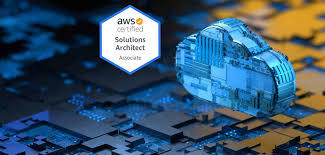
The rapid adoption of cloud technologies has created a strong demand for professionals who can design and implement scalable, secure, and cost-effective cloud solutions. Among these professionals, the AWS Solution Architect stands out as a critical role in helping organizations harness the power of Amazon Web Services (AWS). But what exactly does an AWS Solution Architect do? Let’s break down this pivotal role.
1. Understanding Client Requirements
An AWS Solution Architect acts as a bridge between the technical and business sides of an organization. Their first responsibility is to thoroughly understand a client’s business objectives, challenges, and technical requirements. By assessing current infrastructure and identifying pain points, they lay the groundwork for an effective cloud solution.
Key responsibilities include:
Conducting stakeholder interviews.
Gathering and analyzing technical requirements.
Defining success metrics for cloud migration or deployment projects.
2. Designing Scalable and Secure Architectures
At the heart of their role, AWS Solution Architects design cloud architectures that are scalable, secure, and tailored to the client’s needs. Leveraging AWS’s wide range of services—such as EC2, S3, RDS, Lambda, and VPC—they create solutions that optimize performance and cost while ensuring high availability.
Key considerations during design include:
Security: Ensuring data encryption, access control, and compliance with industry standards.
Scalability: Designing systems that can handle traffic spikes and scale seamlessly.
Cost Optimization: Choosing the right AWS services to minimize costs while meeting requirements.
3. Overseeing Cloud Migration
When organizations move from on-premises infrastructure to AWS, Solution Architects play a crucial role in planning and executing the migration process. They develop step-by-step strategies, often employing AWS services like the AWS Migration Hub, Database Migration Service (DMS), and Snowball for seamless transitions.
Key tasks include:
Assessing current infrastructure for cloud readiness.
Identifying dependencies and prioritizing workloads for migration.
Ensuring minimal downtime during the transition.
4. Collaborating with Cross-Functional Teams
AWS Solution Architects don’t work in isolation. They collaborate with developers, DevOps engineers, system administrators, and business teams to implement their designs effectively. They often serve as technical advisors during the implementation phase, ensuring the architecture is executed as planned.
Collaboration may involve:
Guiding development teams on best practices for coding within the AWS environment.
Working with DevOps teams to set up CI/CD pipelines using AWS tools like CodePipeline and CodeBuild.
Assisting operations teams with monitoring and logging via services like CloudWatch and AWS X-Ray.
5. Ensuring Performance Optimization
Even after deployment, the role of an AWS Solution Architect doesn’t end. They continuously monitor and optimize systems to ensure they perform at their best. This includes:
Reviewing usage patterns and scaling resources accordingly.
Analyzing system performance using tools like AWS CloudWatch.
Suggesting optimizations to reduce costs, such as leveraging Spot Instances or improving database configurations.
6. Staying Updated with AWS Advancements
The AWS ecosystem evolves rapidly, with new services, features, and updates being released regularly. AWS Solution Architects must stay ahead of these changes to provide cutting-edge solutions to clients. This involves:
Earning AWS certifications (e.g., AWS Certified Solutions Architect – Associate or Professional).
Attending AWS events, such as re:Invent and AWS Summits.
Exploring new AWS services to identify opportunities for innovation.
7. Educating Clients and Teams
An often-overlooked aspect of the AWS Solution Architect’s role is education. They help clients and internal teams understand the architecture, tools, and best practices to maximize the value of their AWS investment. This includes:
Conducting workshops and training sessions.
Documenting solutions and creating technical guides.
Supporting teams in troubleshooting and issue resolution.
Why is the Role of an AWS Solution Architect Important?
The AWS Solution Architect’s role is crucial because they ensure that organizations can leverage AWS’s full potential to meet business goals. By combining technical expertise with business acumen, they:
Accelerate cloud adoption and innovation.
Reduce costs and improve efficiency.
Ensure robust security and compliance.
Foster collaboration between technical and non-technical teams.
Is Becoming an AWS Solution Architect Right for You?
If you’re passionate about technology, enjoy solving complex problems, and have strong communication skills, becoming an AWS Solution Architect could be an excellent career path. The role offers exciting challenges, high demand, and competitive compensation. To get started, consider earning the AWS Certified Solutions Architect – Associate certification as a foundation for building your expertise.
In conclusion, AWS Solution Architects play a vital role in shaping the cloud strategies of organizations worldwide. By bridging the gap between business needs and technical solutions, they help businesses thrive in the era of digital transformation. Whether you're a business leader or an aspiring professional, understanding this role can provide valuable insights into the future of cloud computing.
Let me know if you’d like the next blog or any adjustments!
#awstraining#cloudservices#softwaredeveloper#training#iot#data#azurecloud#artificialintelligence#softwareengineer#cloudsecurity#cloudtechnology#business#jenkins#softwaretesting#onlinetraining#ansible#microsoftazure#digitaltransformation#ai#reactjs#awscertification#google#cloudstorage#git#devopstools#coder#innovation#cloudsolutions#informationtechnology#startup
0 notes
Text
Skills Required For Learning AWS: A Comprehensive Guide
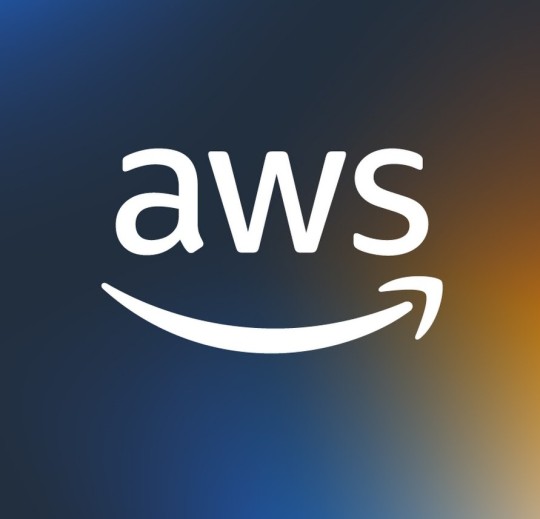
Introduction:
Amazon Web Services (AWS) has become a ruling force in the cloud computing industry, offering various services from computing power to machine learning. Certain skills are essential to master for individuals looking to dive into AWS, whether for career advancement or personal growth. Here's a detailed guide to the necessary skills to learn and utilize AWS effectively.
Basic Understanding Of Cloud Computing:
Before diving into AWS specifics, it's crucial to have a foundational understanding of cloud computing. Embark on a transformative journey into cloud computing with AWS Training in Chennai at Infycle Technologies. As a leading provider of AWS training, we offer comprehensive courses designed to equip you with the skills and knowledge needed to excel in cloud computing. It includes knowing:
Cloud Concepts: Understanding the basic principles of cloud computing, including its benefits (scalability, elasticity, cost-efficiency) and deployment models (public, private, hybrid).
Service Models: Familiarity with the three primary service models: Infrastructure as a Service, Platform as a Service (PaaS), and Software as a Service.
Familiarity With AWS Core Services:
AWS offers a plethora of services, but starting with the core services provides a strong foundation:
Compute EC2 (Elastic Compute Cloud) for scalable computing capacity.
Storage: S3 (Simple Storage Service) for object storage and EBS (Elastic Block Store) for block storage.
Databases: RDS (Relational Database Service) and DynamoDB for NoSQL databases.
Networking: VPC (Virtual Private Cloud) for isolated network environments.
Basic Networking Knowledge:
Understanding networking basics is essential for effectively using AWS services:
IP Addressing: Knowledge of IP addresses, subnets, and CIDR notation.
DNS: Understanding how the Domain Name System (DNS) works, particularly with Route 53.
Load Balancing And CDN: Familiarity with concepts like load balancing (ELB) and content delivery networks (CloudFront).
Proficiency In Scripting And Programming:
Some level of scripting or programming knowledge is beneficial, particularly for automating tasks and managing AWS resources:
Python or Node.js: These are commonly used languages for AWS Lambda (serverless computing).
Shell Scripting: Useful for managing and automating AWS instances.
JSON/YAML: Understanding these formats is crucial for working with AWS CloudFormation and configuration files.
Understanding Of Security Practices:
Security is a most important concern in the cloud, and AWS provides various tools and best practices to secure resources:
IAM (Identity and Access Management): Managing users, roles, and permissions.
Encryption: Knowledge of data encryption at rest and in transit.
Security Groups And NACLs: Configuring firewall rules to control traffic to AWS resources.
Familiarity With Monitoring And Management Tools:
Monitoring and managing AWS resources requires knowledge of several AWS tools:
CloudWatch: This is for monitoring and logging AWS resources.
CloudTrail: This is for auditing and tracking API calls.
Trusted Advisor: For insights and recommendations on AWS best practices.
DevOps And Automation Skills:
AWS and DevOps go hand in hand, with numerous services designed to facilitate continuous integration and continuous deployment (CI/CD):
AWS CodePipeline and CodeBuild: These are used to automate build and deployment processes.
Infrastructure as Code (IaC): Using AWS CloudFormation or Terraform to manage infrastructure through code.
Configuration Management: Familiarity with tools like Ansible, Chef, or Puppet to maintain consistency across environments.
Hands-On Experience:
Theory alone isn't enough. Unlock your potential and shape a rewarding career in the dynamic world of software development with Infycle Technologies, recognized as the Best Software Training Institute in Chennai. Practical, hands-on experience is crucial:
AWS Free Tier: Utilize the free tier to experiment with AWS services without incurring costs.
Labs And Projects: Engage in labs and build projects to solve real-world problems using AWS.
Certifications: Consider pursuing AWS certifications (e.g., AWS Certified Solutions Architect) to validate your skills and knowledge.
Continuous Learning And Adaptation:
The tech landscape, particularly cloud computing, is ever-evolving. Continuous learning is essential:
AWS Documentation and Whitepapers: Regularly read AWS documentation and whitepapers to stay updated on best practices and new services.
AWS Read Webinars: Participate in AWS events and webinars to get knowledge from experts and community members.
Community Engagement: Engage with AWS communities, forums, and users to give knowledge and learn from others.
Conclusion:
Learning AWS is a multifaceted journey that requires combining technical knowledge, practical skills, and continuous learning. By Embedding the skills outlined in this guide, you'll be well-equipped to leverage AWS's vast ecosystem, drive innovation, and advance your career in the cloud computing domain. Whether you are a beginner or an experienced professional, these skills will provide a solid foundation for your AWS learning path.
0 notes